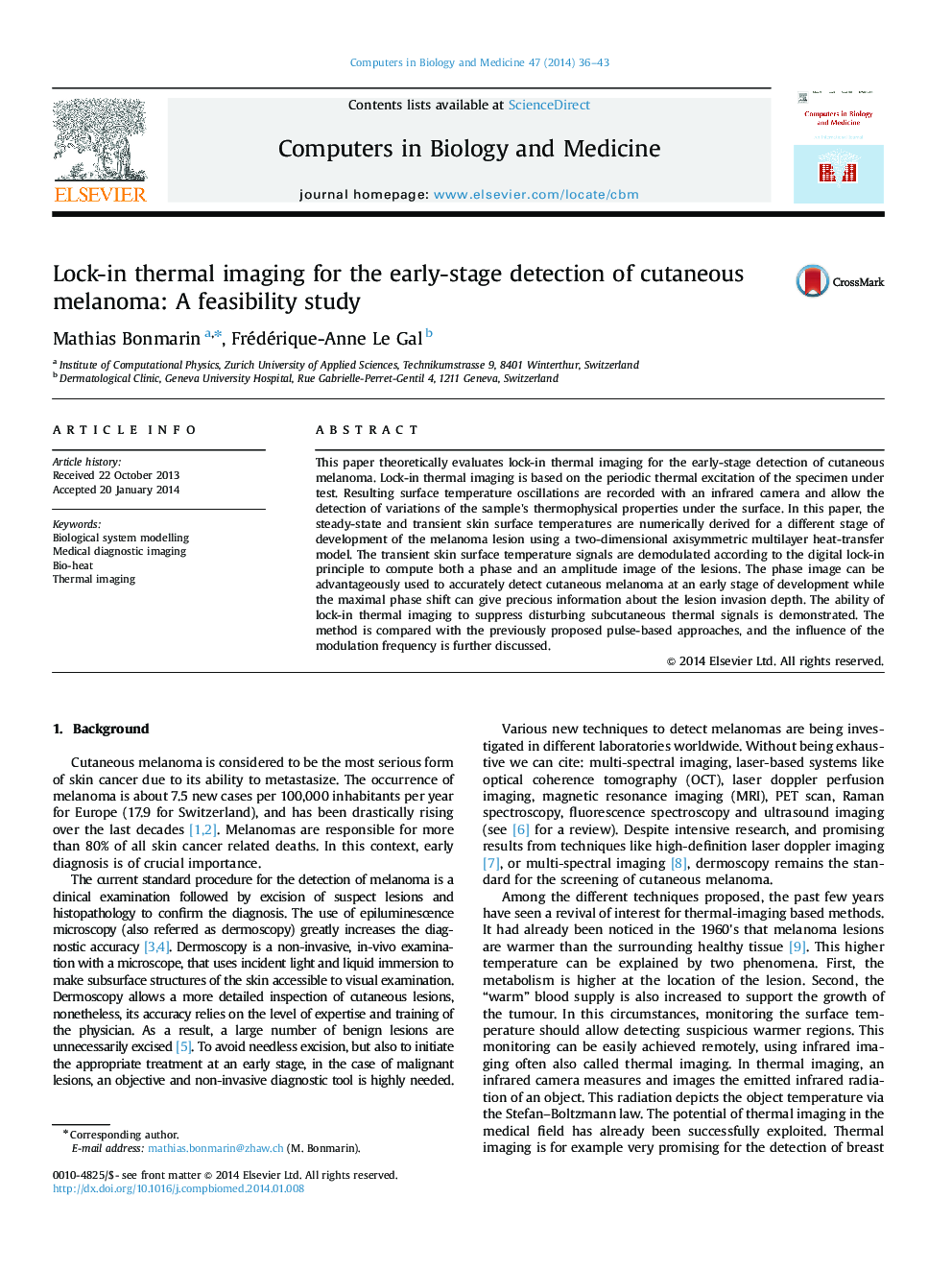| Article ID | Journal | Published Year | Pages | File Type |
|---|---|---|---|---|
| 6921704 | Computers in Biology and Medicine | 2014 | 8 Pages |
Abstract
This paper theoretically evaluates lock-in thermal imaging for the early-stage detection of cutaneous melanoma. Lock-in thermal imaging is based on the periodic thermal excitation of the specimen under test. Resulting surface temperature oscillations are recorded with an infrared camera and allow the detection of variations of the sample׳s thermophysical properties under the surface. In this paper, the steady-state and transient skin surface temperatures are numerically derived for a different stage of development of the melanoma lesion using a two-dimensional axisymmetric multilayer heat-transfer model. The transient skin surface temperature signals are demodulated according to the digital lock-in principle to compute both a phase and an amplitude image of the lesions. The phase image can be advantageously used to accurately detect cutaneous melanoma at an early stage of development while the maximal phase shift can give precious information about the lesion invasion depth. The ability of lock-in thermal imaging to suppress disturbing subcutaneous thermal signals is demonstrated. The method is compared with the previously proposed pulse-based approaches, and the influence of the modulation frequency is further discussed.
Keywords
Related Topics
Physical Sciences and Engineering
Computer Science
Computer Science Applications
Authors
Mathias Bonmarin, Frédérique-Anne Le Gal,
